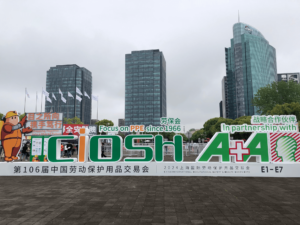- info@cnygm.com
- +(0)86-576-88122360
How to Work with Rainbow Reflective Vinyl
Table of Contents
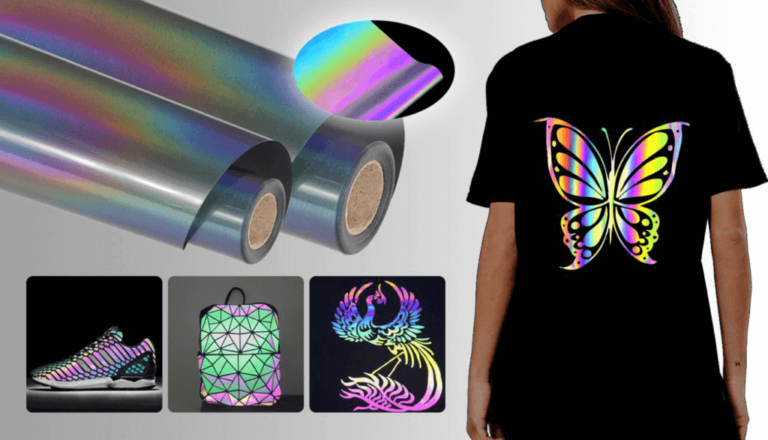
Figure 1: Rainbow Reflective Vinyl
Who does not want to look cool while being safe?
Rainbow reflective vinyl is the perfect way to achieve that. It offers a degree of reflectivity and visibility not seen in traditional colors, making it an ideal choice for cyclists, pedestrians, runners, and anyone who wants to stand out and be seen at night.
But nowadays, fashionistas have also discovered the beauty in rainbow reflective vinyl and incorporated it into their wardrobe.
According to a report by Technavio, “The global market for reflective material used in sporting goods was valued at USD 355.8 million in 2020 and is expected to grow at a CAGR of 4.3% from 2022 to 2025.”
From sports items to everyday clothing, more and more people are turning to rainbow reflective vinyl for its reflectivity and aesthetic appeal.
This blog post will cover all you need to know about working with rainbow reflective vinyl and how to utilize it. So let’s begin reading.
An Introduction To Rainbow Reflective Vinyl| A Basic Overview

Figure 2: Rainbow Reflective Vinyl Sheet
Rainbow reflective vinyl is a special material that reflects light to its source. It comprises tiny glass beads embedded in a polymer sheet made of vinyl.
The result is an incredibly reflective material that can be used for various applications such as T-shirts, caps, shoes, backpacks, etc.
In other words,
Rainbow reflective vinyl is a type of reflective material that reflects light to its source in the form of rainbow-like colors. It has an aesthetic appeal and at the same time, offers greater visibility than traditional reflective materials.
This highly reflective vinyl polymer displays rainbow colors such as violet, indigo, blue, green, yellow, orange, red, white, silver, and gold. It comes in a sheet or roll format and has an adhesive backing to aid in trimming, weeding, and placement during hot pressing.
Point to keep in mind,
The rainbow reflective heat transfer vinyl is created using PES and TPU materials of the highest quality, allowing you to create designs that will last through years of wear and tear.
It’s suitable for a wide range of fabrics such as T/C, Polyester, webbing and other fabric materials, as well as safety clothing. The fabric materials compatible with the rainbow reflective HTV are T/C, Polyester, and webbing, etc.
Please note that,
The material cannot be applied to metal, cars, plastic, and wooden products using a hot press.
How to Use Rainbow Reflective Heat Transfer Vinyl?
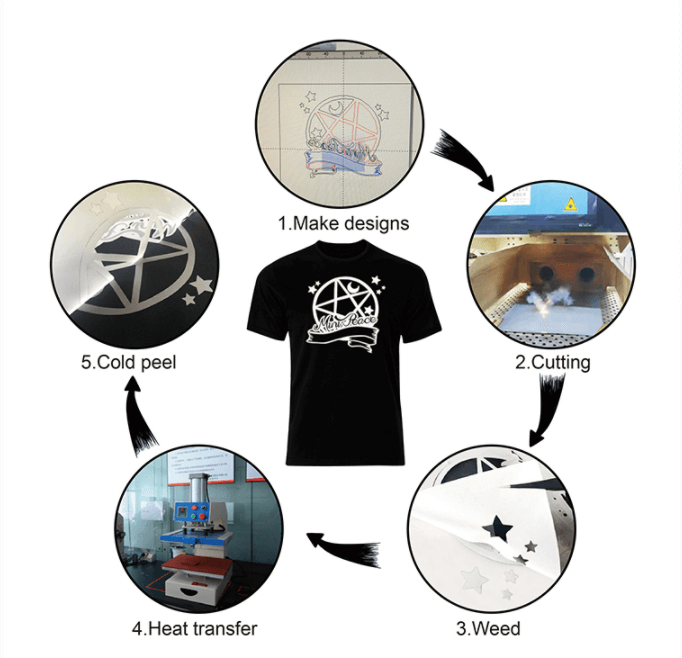
Figure 3: Application Instructions Of Rainbow Reflective Vinyl
It is very obvious that pressing the rainbow reflective vinyl on fabric is difficult. It will burn before you have time to finish packing it.
If you want to print a design on a shirt with the help of computerized machine, first, you have to make sure that the fabric is compatible with the vinyl. Now, these are some steps which you need to follow:
- Begin by opening your design file and mirroring it on your computer.
- Cut the vinyl with a knife plotter or laser plotter, keeping the transparent layer of the carrier sheet facing down.
- Weed out any excess material from the design.
- You can use a heat or home iron to press the design at 120°C-150°C, applying medium pressure for 10-15 seconds.
- Allow the design to cool off before removing the carrier sheet.
In this manner,
You can create beautiful and eye-catching designs using rainbow reflective vinyl. These are not just for shirts or other apparel but also bags, caps, and even shoes. Rainbow reflective shoes are a crazy fashion trend, and many celebrities have worn them.
Types of Rainbow Reflective Heat Transfer Vinyl
Many people think that there is only one type of reflective vinyl.
Infact,
There are numerous varieties offer different features and reflectivity and can be differentiated based on two categories:
Backing Fabric
According to their heat-sensitive backing fabrics, the vinyl can be divided into PES and TPU. Both provide excellent washing durability.
However,
PES has slight elasticity suitable for pressing onto polyester, webbing, T/C and other fabrics that do not require a significant degree of flexibility or have little elasticity.
On the other hand, TPU’s elasticity can be modified, providing greater flexibility ideal for hot pressing onto PU, TPU, and other coated fabrics that require a higher degree of mobility.
Reflective Effect
When we talk about the reflective effect, our minds instantly make us think about the rainbow reflective vinyl.
However,
This type of reflective material can be classified into three types depending on its reflective pattern:
- Aurora Color:
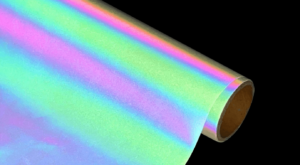
Figure 4: Aurora Color Rainbow Vinyl
The first is the holographic style or Arora color, which has a glittering and dynamic rainbow color with improved reflected light intensity.
In this style,
The reflective vinyl has a special surface treatment that offers superior resistance to abrasion and chemicals. The colors are brighter and stronger for added depth and dimension.
Segmented Rainbow:
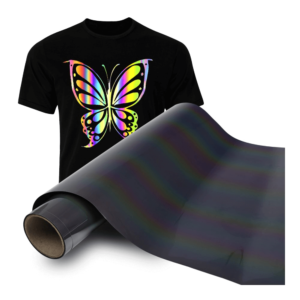
Figure 5: Segmented Rainbow Vinyl
As the name indicates, it is segmented or divided into different colors, making it easier to create a specific design with multiple color choices.
It is more economical than other reflective vinyl and offers a greater selection of colors but is known to be less durable than the Arora type. Each color is enhanced and divided from the others to create a distinct reflective effect.
Blue Purple Light:

Figure 6: Blue Purple Light Rainbow Reflective Vinyl
This type shows a merge of blue and purple, creating a unique reflective effect with slightly brighter colors. It is also more durable and offers an improved level of reflection on a variety of fabrics.
The reflective pattern is much finer and less pronounced than the segmented rainbow type but still provides an attractive visual effect for your designs.
These are the different types of reflective vinyl which you can use for your apparel or other materials. With all these options, it’s easier than ever to create beautiful designs that will make you stand out from the crowd. So go ahead and give it a try. You’re sure to love the results.
Final Words
Well, rainbow reflective heat transfer vinyl is a top-tier material, allowing you to create unique, eye-catching designs on your apparel and other materials.
Safety is another approach to be considered since the reflective material meets safety standards and makes it easier to spot your gear in the dark and light.
To narrow down your choices, YGM is the benchmark dealer of reflective vinyl. We are the pioneers in reflective vinyl production and aim to provide superior quality products that meet the required industry standards.
All your reflective vinyl needs can be fulfilled with us. So what are you waiting for? Go get your hands on YGM’s exclusive products and create beautiful designs that will leave everyone in awe. Contact us today, and get the best deals on reflective vinyl.
Frequently Asked Questions
What temperature do you heat rainbow reflective vinyl?
You should heat rainbow reflective vinyl at a temperature between 130°C and 150°C for PES-backed vinyl and adjustable temperatures ranging from 120°C to 150°C for TPU-backed vinyl.
Is rainbow reflective vinyl a cold peel?
Our reflective heat transfer vinyl requires a cold peel. After completing the hot pressing process, you should wait approximately 30 seconds before removing the PET film from the surface.

Contact Us
- + 86-0576-88122360
- +86 18358652001
- +8615005869778
- info@cnygm.com
- 2355 Haifeng Road,Binhai Industrial Zone,Economic Development Area,Taizhou,Zhejiang
